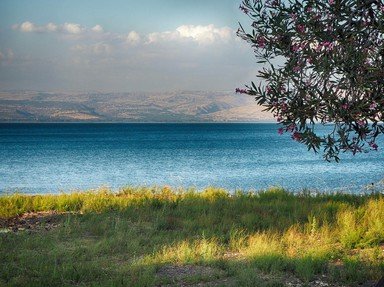Quiz Answer Key and Fun Facts
1. To begin with, which of the following sets of meanings are the NEAREST approximations of the name Bethany, as it is translated into the English language?
2. According to the book of the gospel of John, about how far was the town of Bethany from Jerusalem?
(See chapter 11, verse 18.)
3. Jesus had some friends who lived in the village, while He was present on earth. What were their names?
4. Jesus is recorded as being present at a feast in Bethany once.
While there, He was questioned by some of his disciples, (notably Judas Iscariot) about a woman who was present wasting such an expensive ointment on Him, instead of selling it and donating the money to charity.
How did Jesus respond?
(This is according to the King James Version of Matthew 26:6-13.)
5. "Hosanna to the Son of David" was the cry that some people shouted as Jesus made his triumphal entry into Jerusalem. Scripture in Matthew 21:15 tells us who these people were, that were praising Jesus before he went on to the village of Bethany to spend the night.
Who were these people, that praised him in such a way?
6. Another tiny little village that existed nearby to Bethany was either situated at the eastern foot of the Mount of Olives, or perhaps even on the slopes of it. Its name, too, began with the prefix "Beth". What was the name of Bethany's "neighbor"?
7. According to the account of Jesus' visit to Bethany, where he ate a meal with those gathered together, how many days was it before the Jewish feast of Passover commenced?
8. After Jesus' resurrection, He ascended to heaven at Bethany, according to Luke 24:50.
9. Jesus was near the villages of Bethphage and Bethany when he sent his disciples to one of those nearby villages to fetch him something. What did he send them to bring back to him?
10. By what modern name is the little village of Bethany known as?
Source: Author
logcrawler
This quiz was reviewed by FunTrivia editor
CellarDoor before going online.
Any errors found in FunTrivia content are routinely corrected through our feedback system.
